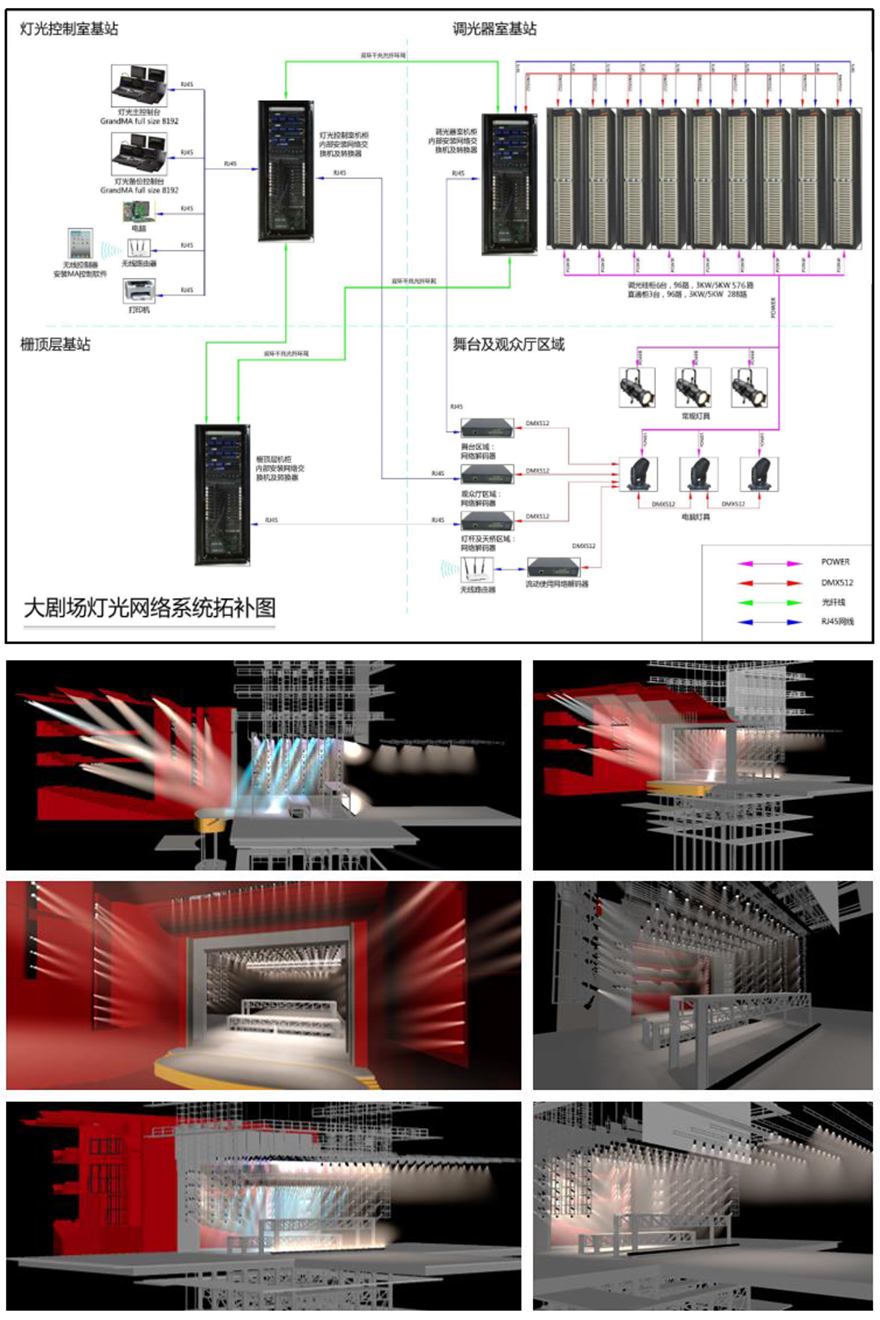The design of stage lighting should first meet the needs of various stage performances, and stage lighting is one of the means of stage art modeling. By using stage lighting equipment and control technology, the audience's line of sight is guided through the dynamic combination of light brightness, color, projection direction, and beam movement to enhance the artistic effect of stage performance, render the performance atmosphere, highlight the central character, create a sense of stage space and time, shape the artistic image of stage performance, and provide necessary lighting effects to create stage atmosphere, regulate and transmit emotional infection and communication between actors and audience.
The main functions of stage lighting should include at least:
①Guiding the audience's gaze to make the stage image clearer: guiding the audience's gaze to a specific position, creating a special visual effect for the audience, providing greater depth to the scene, and presenting a sense of hierarchy.
②Enhance the effectiveness of stage performance: meet the needs of the plot, make the background appear natural, complement the development of the plot, imply and induce, and regulate the atmosphere (actors, audience).
③Lighting performances allow the audience to clearly see the actors' performances and the imagery of the scenery.
④Shaping character images, enhancing emotions, and showcasing stage illusions.
⑤Create the necessary spatial environment for the play.
⑥Create an atmosphere in the play.
⑦Displaying temporal and spatial transitions, highlighting dramatic contradictions and conflicts, strengthening stage rhythm, and enriching artistic appeal; Sometimes it is also accompanied by stage stunts.
Design principles and process requirements for stage lighting system:
The design of stage lighting system should follow the rules and special usage requirements of stage performance art for configuration. Its purpose is to design and configure the lighting technology equipment required for various performance art reproduction processes according to system engineering requirements, so that the stage lighting system can accurately and satisfactorily serve stage art performances.
Stage lighting design should have multiple styling techniques to adapt to different styles of performances. Based on the script, director's requirements, and overall stage art concept, create an artistic conception and draw a lighting design plan.
Principles of Stage Lighting Design:
①Create a complete stage lighting free space that adapts to various performance lighting requirements.
②To ensure the continuous operation of the system, it is necessary to increase the reserve and expansion space appropriately.
③The anti-interference ability and security of the system are important design indicators,
④Try to use high-efficiency and energy-saving cold light source new lighting fixtures while meeting the needs of the performance.
⑤Ethernet and DMX512 digital signal network technologies have been introduced into various aspects of system design.
Requirements for Stage Lighting Engineering Process Design:
①The system process design and equipment configuration have the function of comprehensive theater use, and can rotate the lighting operation schemes of different plays within 2 hours.
②The system allows the use of various types of lighting fixtures and other supplementary equipment with full configuration.
③The entire system can perform continuous diagnostic checks on the lighting control panel without interrupting the main power supply.
④All lighting equipment should meet the technical requirements for stage background noise, that is, in an empty state, the noise of all lighting equipment when turned on should not exceed NR25, and the distance between the testing point and the lighting equipment should be 1m; the noise of the effect equipment should not exceed 30dB.
⑤The system should reserve sufficient expansion capacity, such as power capacity, silicon room capacity, network capacity, etc.
Illumination requirements for stage performance area:
1. Illumination index of the performance stage in the multifunctional hall
①The vertical illumination in the main performance area shall not be less than 1200LX (tested at a height of 1m from the table).
②Color rendering index: Ra>90.
③Color temperature: Conventional lighting fixtures 3200K ± 150K, special effects lighting fixtures 4700-5600K.
④Variety shows should be able to showcase colorful and dynamic stage lighting, as well as simple stage scenes.
2. Illumination index of conference lighting stage
①The vertical illumination of the stage shall not be less than 550Lx (tested at a height of 1m from the tabletop).
②The color rendering index Ra is greater than 90.
③Color temperature: Conventional lighting fixtures 3200K ± 150K.
④Meeting lighting should fully reflect the solemn and elegant meeting scene, meeting the lighting requirements of television photography.


Tel:010-8538 3866
Address:Building 35, No.1 Headquarters,Tongzhou District, Beijing
WebSite:https://www.jindonggaoke.com/
Copyright 2018 北京金东高科科技有限公司 All Rights Reserved. 北京领助科技有限公司提供技术支持 京ICP备17042895号